Planting a windbreak is a commitment to the future, a means of energy conservation as part of a sustainable lifestyle. Yet the rewards are also immediate. Maturing plants provide shelter and food for wildlife and make outdoor spaces more livable year-round.
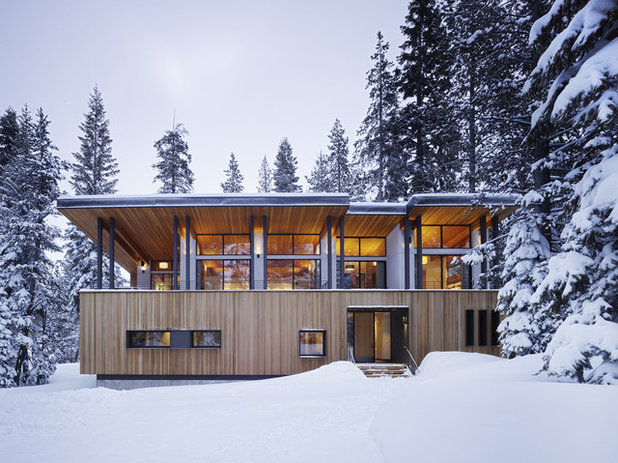
John Maniscalco Architecture
Winter’s icy cold can be exacerbated by strong winds. Left unchecked, this cold air can penetrate windows, doors and other small openings in your home’s facade. An evergreen windbreak can reduce wind velocity by two-thirds and reduce heating bills by 20 to 30 percent.
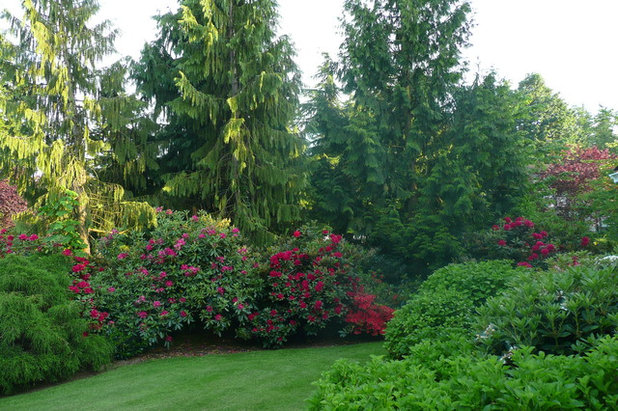
Use evergreen trees at least twice the height of your home and plant them perpendicular to the prevailing winter winds. Tall, dense trees will guide the wind upward and over the downwind area for a distance of up to 10 times the height of the windbreak.
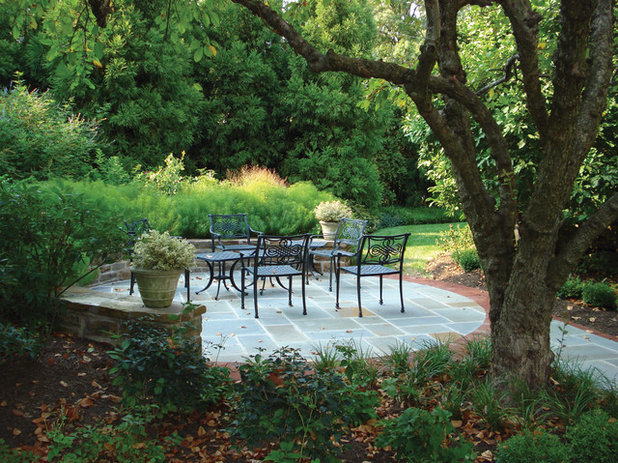
Wallace Landscape Associates
The calmest zone, however, will be within a distance of one to two tree heights from the windbreak.
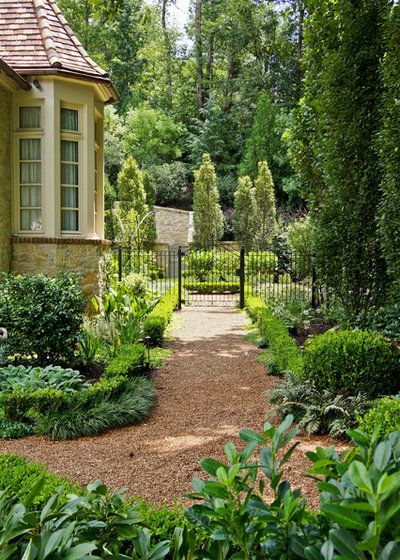
Joe A. Gayle & Associates
Trees should be sited no closer than 10 feet to the house, but within 50 feet of it. Tall evergreen trees should be planted 10 to 20 feet apart in rows or clusters for maximum effect.
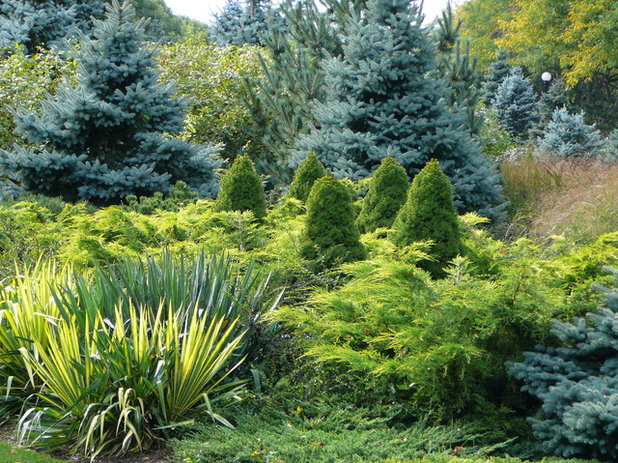
Koreman Landscape Company
When selecting trees for a windbreak, keep in mind:
- The trees should be evergreen and have branches all the way to the ground.
- The trees should be well adapted to your site’s growing conditions — think native — so they will grow tall and dense.
- When planting a windbreak close to buildings, it’s especially important to select trees with strong wood to help prevent storm damage. Plan to enlist the help of a certified arborist to keep your trees healthy and ensure a long life.
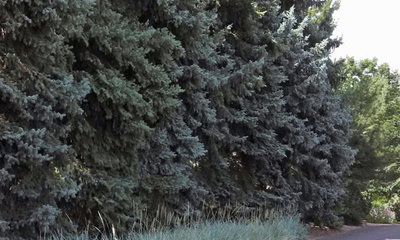
jocelynsgarden.blogspot.com
Evergreen trees to consider include:
- Colorado blue spruce (Picea pungens, zones 2 to 7), shown here
- Alaska cedar (Chamaecyparis nootkatensis, zones 4 to 8)
- White fir (Abies concolor, zones 4 to 7)
- American arborvitae (Thuja occidentalis, zones 3 to 8)
If you live in a drier climate, consider
Eastern redcedar (
Juniperus virginiana, zones 2 to 9),
pinyon pine (
Pinus cembroides var.
edulis, zones 4 to 9
) or
Arizona cypress (
Cupressus arizonica, zones 7 to 9).
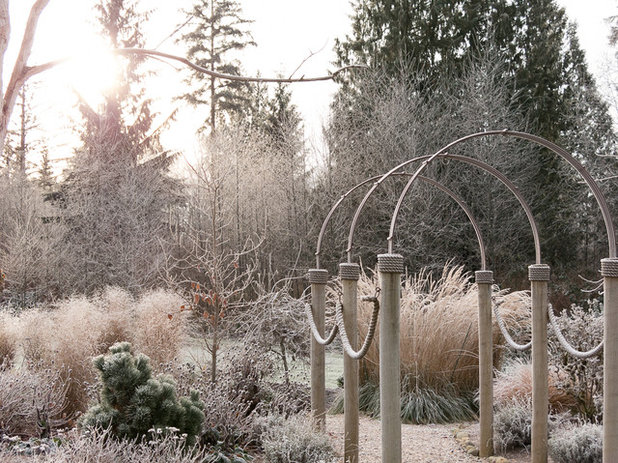
Le jardinet
When evergreens are interplanted with large shrubs and ornamental trees, windbreaks can do double duty as attractive privacy screens and noise barriers. Adding deciduous plants to a windbreak also broadens its appeal as a wildlife habitat. Choose plants with colorful, nectar-rich flowers and fruit.
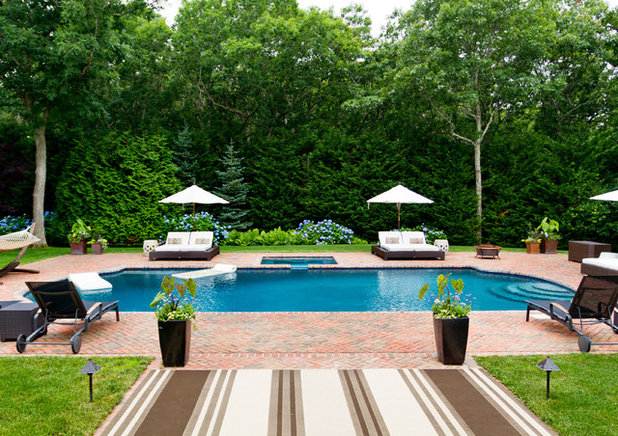
Rikki Snyder
Consider adding windbreaks to protect outdoor living spaces as well — even if they’re used predominantly in the summer. Outdoor activities such as swimming and dining are much more enjoyable in a calm setting.
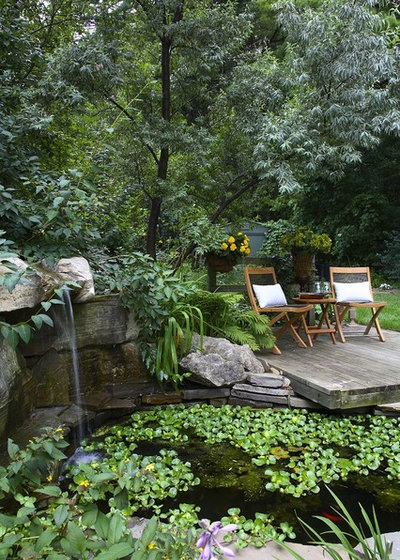
Jackie Glass Inc.
Reduced wind velocity will also help conserve water by reducing water loss via evaporation and oversplash in fountains, waterfalls, pools and ponds.
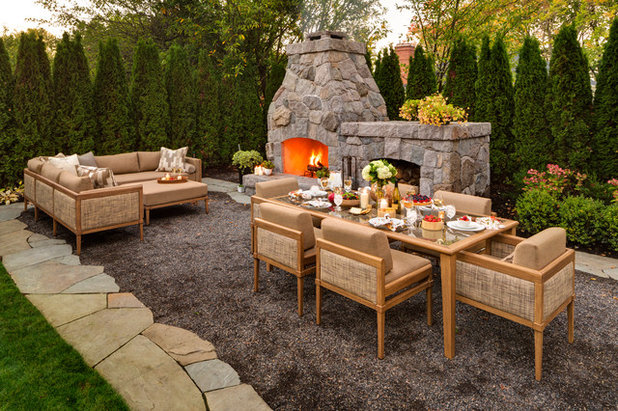
Whether large or small, an evergreen windbreak can help you make the most of your outdoor environment and — in time — help you save money and heating fuel.





